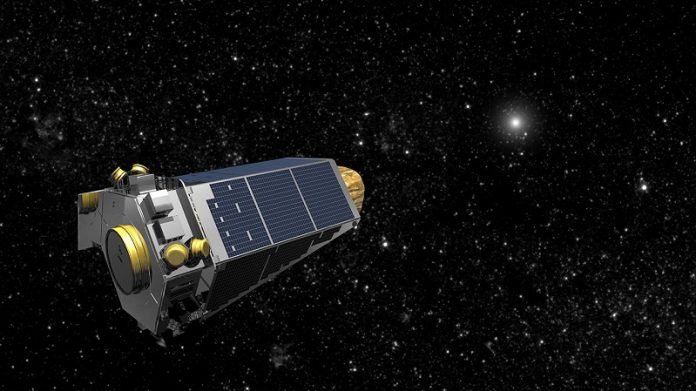
Earthlings have long daydreamed about faraway planets, but only recently have scientists been able to identify thousands of new exoplanets—and to learn more and more about what they look like.
The latest: a new exoplanet discovered by NASA’s Kepler spacecraft in the constellation of Cancer.
Thanks to good timing and the planet’s odd orbital pattern, scientists with the University of Chicago were able to calculate its mass more precisely than any other planet this small to date.
“It was totally unexpected—at first we thought there was something wrong with the data, but when we looked at it closely, it was super clear,” said graduate student Aaron Hamann, the first author on the paper.
“There are two planets going around this star, and they are acting very strongly on each other, which allows us to calculate their masses with record-breaking precision.”
Launched in March 2009, the Kepler mission was designed to look specifically for exoplanets—planets orbiting stars in distant systems, some of which may harbor life.
Scientists comb through its data, looking for anomalies around distant stars that might indicate planets.
This was the mission for a group of University of Chicago scientists working with Assoc. Prof. Daniel Fabrycky, a hunter of strange exoplanets—among others, he’s weighed planets in complex systems containing five to seven planets, and teased out the orbital interactions of four planets locked in orbit more tightly together than any other system.
Faraway planets are too tiny to see with telescopes, so a primary way that such exoplanet hunters search for them is by noticing a very small dimming of a star’s light as a planet passes in front of it.
When Kepler first looked at the cool star called K2-146, which is located about 258 light-years away, scientists saw one planet making an irregular dimming pattern.
But poring over the data from Kepler’s second and third passes years later, the team confirmed the irregularity was caused by a second planet.
This second, smaller exoplanet was circling and pulling on the first planet’s orbit.
As the two exoplanets pass each other, they speed up a little: “A mini slingshot effect,” Hamann said. (There’s a parallel in our own solar system.
Neptune was discovered the same way, Fabrycky said: Scientists noticed Uranus orbiting strangely and inferred a new planet was responsible—leading to Neptune’s direct discovery.)
But K2-146’s planets are extreme among the known exoplanets, the scientists said. Both planets zip around the sun in a matter of days: 3.99 days for the larger, 2.66 for the smaller, on average.
“Because they have short orbital periods and the gravitational effects are strong, the orbit changes dramatically as we watch it,” Fabrycky explained.
“To give you a sense of it, our year always has 365 days, but these planets will have years that are significantly shorter or longer,” Hamann said. “It would be as though your birthday would sometimes come almost a month earlier or later than you’d normally expect.”
They hadn’t seen the second planet clearly in the first pass since it wasn’t in front of the star at the right time, but in the second and third passes, the two planets’ dance had made them shift so that both were clearly visible.
Asst. Prof. Leslie Rogers, who specializes in decoding the composition of exoplanets, helped them guess that the planets may have a rock core with a substantial gas atmosphere thick enough to block sunlight.
Normally planets this close to their suns would have had the atmosphere stripped away by photons. (Neither planet is habitable, the scientists said: Temperatures probably run close to 600 degrees Fahrenheit.)
Further compounding scientists’ good luck, Kepler happened to be looking at the system at key points during the transits.
“We caught it at just the perfect time, so that we could measure it to a precision of 3%, even though we looked at it for a relatively short period of time,” Hamann said.
“You need a planet’s mass to understand its gravity, so having such an accurate mass helps us interpret what the atmosphere must look like,” said UChicago NASA Sagan Fellow and co-author Benjamin Montet.
The scientists said the discovery has implications for how to direct searches for future exoplanets, such as NASA’s new exoplanet mission, the Transiting Exoplanet Survey Satellite (TESS), which is in orbit now.
“This is a good reminder, especially as TESS continues, that if you check back on a system two years later, you might learn quite a lot,” Fabrycky said. “There are plenty of other planets in hiding like this.”
Scientists with the NASA Goddard Space Flight Center and the University of Washington also co-authored the study, which will be published shortly by the American Astronomical Society Journals.
Written by Louise Lerner.



